CNC (Computer Numerical Control) machining revolutionizes modern manufacturing through precision part production. When choosing between metal and plastic CNC machining, manufacturers must consider various factors affecting their project outcomes. In this blog, let's explore the world of metal and plastic CNC machining, comparing their characteristics, applications, and factors to consider when making a choice.
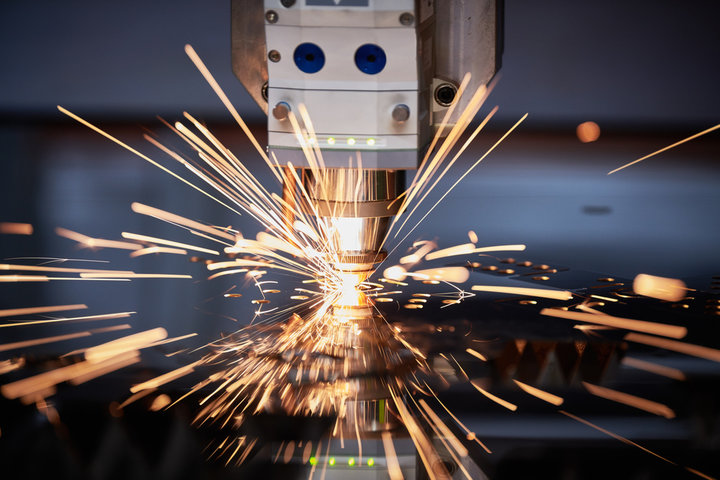
What is Metal CNC Machining?
Machining metals using computer numerical control (CNC) machines is classified under subtractive manufacturing wherein different shapes are achieved by cutting away portions of metal workpieces. Some techniques are performed with the help of a number of machine tools, namely, drills, mills, and lathes that remove material as per programmed instructions.
Metal CNC Machining: Advantages and Considerations
Primary Advantages
Machined metal parts excel in the following ways:
The strongest materials can withstand the most intense activities
Resistance to extreme temperature conditions
Exceptional electrical and thermal conductivity
Products that can withstand wear and tear over a longer period of time
Constraints to Take into Account
The nature of metal machining brings about certain limitations:
These are more expensive than plastic counterparts
Where long machining processes are involved to obtain accurate dimensions
Applications with weight restrictions such as in the case of aerospace and automotive
Common Materials for Precision Metal CNC Parts
CNC metal manufacturing utilizes various materials and focuses mainly on specific strength, weight, and the ability to work with the material. The following are examples of the most widely used precision metals and their characteristics:
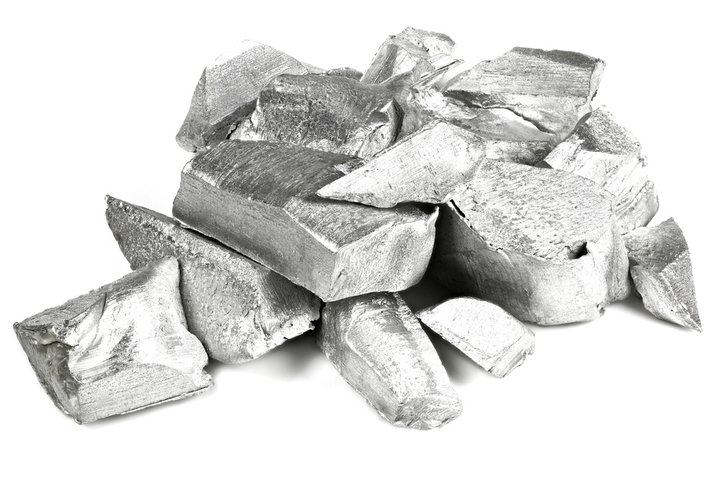
Aluminium
Machining of aluminium to precision tolerances is light and promotes good working conditions under machinability. When it comes to parts that require aerospace-grade cutting and tightening of components such as automotive precision parts, this can withstand high cutting speed tolerance and low tool wear.
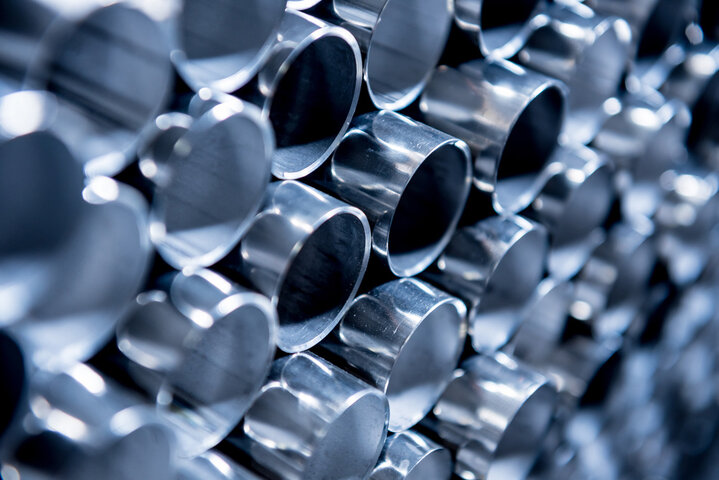
Steel
Steel possesses remarkable tensile strength, hardness, and resistance to wear, therefore, it can bear extreme loads and features. With the assistance of different grades and heat treatments, a lot of applications like gears, bearings, and cutting tools can have performance tailored steel.
Brass
Brass is an alloy made up of copper and zinc which allows for precision machinability in cutting without corrosion. Due to its appealing golden color, it is most preferred for the manufacture of ornamental parts and parts which are prone to moisture.
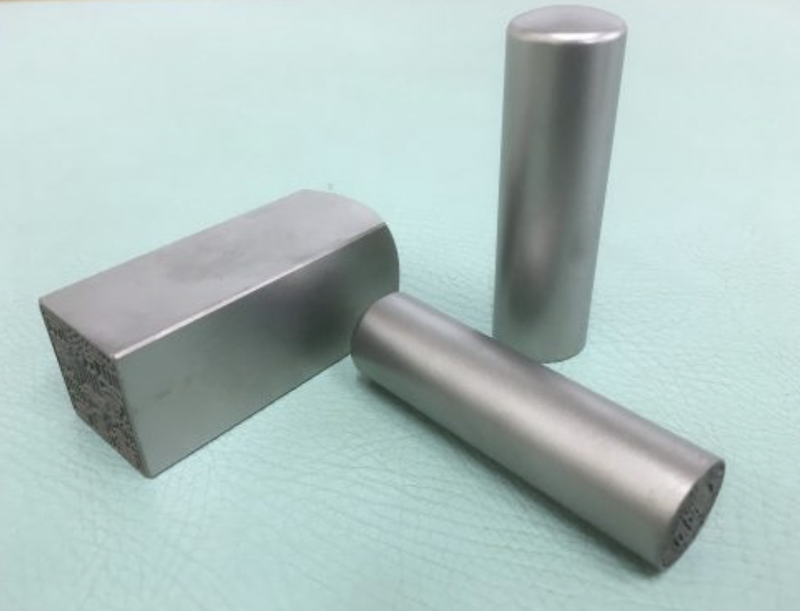
Titanium
Without any doubt, titanium is the metal to go for because of the strength that one gets against the weight and almost zero corrosion. Thus its seems also logical that due to bone integration together with corrosion resistance titanium is almost wholly used in making implants and instruments.
Copper
Being a copper base material, it is unsurprising that copper has remarkable thermal and electrical conductivity thus making copper elements necessary for electrical and thermal management. Because of its suitability to be cut into complex shapes together with quite tight tolerances, it is excellent for use in heat sinks and electrical connectors.
What is Plastic CNC Machining?
When we talk about CNC machining of plastic, we mean the use of machines that are operated by computers and are designed specifically to cut and carve different kinds of plastics. Some of the most common plastic materials which are used in the plastic CNC machining process include ABS (Acrylonitrile Butadiene Styrene), nylon, polycarbonate and acrylic plastics. These types of materials have distinct characteristics leading to their usage in various applications.
Plastic CNC Machining: Benefits and Limitations
Cost and Production Advantages
Plastic machined parts deliver significant economic value through:
Lower material costs compared to metal alternatives
Reduced production time due to easier machinability
Decreased shipping expenses from lighter weight
Cost-effective scaling for high-volume production
Application Strengths
The material properties particularly excel in:
Superior electrical insulation performance
Ideal characteristics for electronics housings
Versatile options for protective casings
Compatible with precision electronic components
Performance Constraints
Key considerations when choosing plastic machining include:
Limited strength compared to metal components
Reduced heat resistance in extreme environments
Potential warping with moisture exposure
Restricted use in high-stress applications
Common Engineering Plastics for CNC Machining
The processes involved in plastic CNC machining use diverse materials mainly because they are economical, simple in design, and perform certain functions:
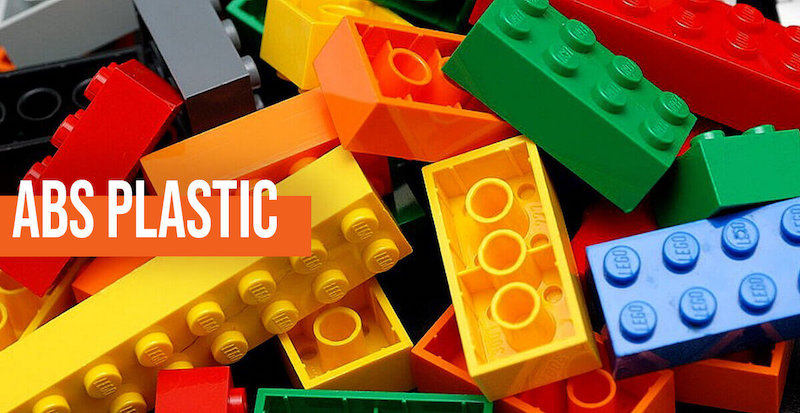
ABS (Acrylonitrile Butadiene Styrene)
Also known as acrylonitrile butadiene styrene, its major asset is the resistance to breakage and strength of the material. Fine cutting and a smooth finish are possible due to precision machining of ABS plastic, which makes their application in produc ts such as automotive and consumer goods that require shock absorption possible.
Nylon
When it comes to moving parts or applications involving friction, nylon is unbeatable thanks to its wear and self-lubricating properties. Because of its chemical resistance and ability to withstand repeated stress, it is also the best material for gears, bearings and other mechanical components.
See more detail about difference between polyamide and nylon.
Polycarbonate
Polycarbonate is a high-performance engineering thermoplastic which, in addition to high transparency, possesses an extreme impact strength. Such emphasis on clarity and their ability to maintain dimensions makes them suitable for use in lenses, windows, and other protective enclosures across industries.
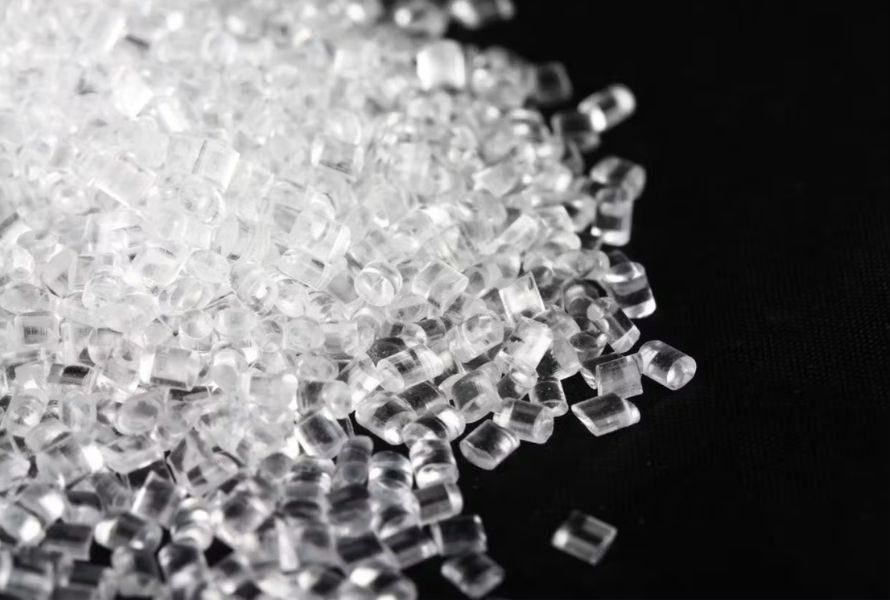
Acrylic (PMMA)
Acrylic comes in with crystal clarity and UV stability, the latter preventing yellowing in the long run. The ability of PMMA to be machined easily makes it widely used in housing for display elements, light pipes, and optical lens where clarity of vision is sought.

PEEK (Polyether Ether Ketone)
It is a high-tech plastic characterized by hight strength, heat stability and chemical resistance. Its ability to retain such characteristics at high temperature levels also makes it quite essential for critical uses in aerospace, automotive, and medical applications.
More details about Peek Plastic.
Advanced Comparison: Metal vs Plastic CNC Machining
Dynamics of Manufacturing Processes
Metal CNC Machining implies implementation of rigid and powerful spindle machines and fixtures for cutting processes. Such operations usually involve continuous infiltration of coolant liquids and several steps of cutting to accomplish the final figures. Tooling expenses are one of the highest factors in productivity, as carbide tools only endure in power sanding for 2 to 4 hours on •14 cutting-dry.
CNC Plastic Manufacturing satisfies with conventional equipment layouts and, frequently, does not even use coolants. In general, operations less than one cutting pass are pervasive, and some PCD bits tend to offer up to 8-12 hours of cutting out daily. Nonetheless, cooling becomes critical, owing to the fact that thermoplastics are not very conductive and therefore do not dissipate heat effectively.
Performance characteristics
Metal Parts allow for treatment with extreme polished surfaces for surface roughness values to Ra 0.2µm categorized as uncoated turning. They possess internal geometries stable from -40 to 800 degrees Celsius and are capable of withstanding even 85% thread engagement strength owing to their threaded designs. Most metals, including steels, can be manufactured with a wall thickness of about 0.3mm.
Plastic Parts can, in most cases, provide a finish of Ra 0.4 µm and retain their shape and size over the range of 20ºC to 150ºC for engineering plastics. The strength of the plastic threads usually reaches 40% of the strength of their metal counterparts, and the wall thickness is not less than 1.0 mm in order to avoid the deformation of the part. They however, perform quite well in applications requiring moisture imperviousness and electrical isolation.
Economic Impact Analysis
Material costs for metals average 3-5 times higher than engineering plastics, while machining time runs 2-3 times longer. However, metal components offer significant advantages in service life and maintenance intervals. Plastic components provide 60-70% weight reduction compared to metal equivalents, substantially impacting shipping and handling costs in high-volume production.
Factors to Consider When Choosing Between Metal and Plastic for CNC Machining
As one plans for any CNC machining work, either metal or plastic can be selected as suitable materials; however, there are several considerations.
Strength and Durability Requirements: Generally, if the strength and durability are much required from the parts, they would be made from metal. This is due to the fact that metal parts as opposed to plastic ones would bear higher loads, suffer impacts and even wear out.
Heat Resistance: In cases, where the component is to be used in high temperatures, it is often metals that are better suited owing to their heat resistance as opposed to plastics. That’s because, with excessive heat, plastic components can either change shape or even melt.
Electrical Conductivity or Insulation: When it comes to tasks where electricity must pass through the material, as seen in the electronics field, then metal materials are mostly used. On the contrary, when they want to maintain insulation, they use plastic materials.
Budget: This relates to the material available for use and the machining process as well. Due to the nature of production processes, metal CNC machining comes at a high cost as compared to plastic especially for mass production.
Weight: In circumstances that the weight is of great importance, for instance, the aerospace and automobile industries, it is easier to make plastic parts as they have a great advantage of being very light in weight. However, although metal parts are stronger, they will contribute excessive weight on the total product.
Applications of Metal CNC Machining
Metal CNC machining is a process applied in many industries. Of these industries, the following are some where metal CNC machined components are the common parts:
Aerospace: Metal insert machining techniques are of great significance in the manufacture of various engine components, airframe structures and wheeled landing gears. Aluminum, titanium and even stainless steel are commonly used because they are strong, wear-resistant and can withstand high temperatures.
Automotive: Metal CNC machining is crucial in the manufacture of automotive parts in the production of engine parts, transmission and suspension systems among others. These areas are designed using metals that give the strength and reliability required in such high stressed applications.
Medical Equipment: Metal CNC machining enables fast and clean melting and fabrication of small scale detailed medical put on devices as well as aids used in operations imaging appliances. Stainless steel and titanium are two metals that have been beneficial in the use corrosion resistant and implantable materials.
A few particular instances of metal CNC machined components are:
Brackets and mounts for aircraft engines.
Engine blocks and cylinder heads machined for automobiles.
Scissors and forceps used in surgical procedures
Implants and bridges used for dentistry
Applications of Plastic CNC Machining
Even in the industrial world, plastic CNC machining has its place. Some of the sectors where plastic CNC machined parts are extensively adopted are:
Consumer Electronics: The consumer electronic segment is one of the major industries that use plastic CNC machining to make products such as the outer surfaces, internal components, casings, and protective covers. Thermoplastics such as ABS and polycarbonate are especially preferred because they are light yet strong and have good dielectric properties.
Packaging: The other extreme use of plastic CNC machining is in the packaging sector where industries fabricate plastic bottles, containers, and even caps according to their specifications. So polymer materials such as polyethylene and polypropylene are preferred as they can withstand chemical attacks and can be molded easily.
Prototyping: Plastic CNC machining is one of the most used technologies for the creation of prototypes of various designs and for low volume production. Thanks to the relatively cheap price and the speed of production, plastic machining is perfect for creating working mock-ups and test parts.
Some instances of plastic CNC machined parts include:
Cell Phone Cases and peripherals
Shells for television control devices
Containers used for make-up and drugs
Spare pieces that are made for trial purposes
Expert CNC Machining Solutions for Your Project
Regardless of whether your project requires the sturdiness offered by metal or the affordability guaranteed by plastics, TEAM MFG offers precision manufacturing services that meet such requirements in both materials. With more than ten years of experience, having participated in more than a thousand successful product introductions, we provide full-scope ODM and OEM services that include fast turnaround on prototypes, CNC machining, injection molding and die casting services.
Team MFG always looks forward to addressing the appropriate choices of materials for your manufacturing processes. For the material selection of your project, designs, and production techniques, the assistance of the engineering department is offered. For any in-between stages from single prototypes to low-volume production runs, we embrace the challenge of producing quality precision parts to your specifications.
FAQs About Mental and Plastic CNC Machining
Q: What are the distinctions between metal and plastic CNC machining?
Metal CNC machining is costly, but it provides added strength and heat resistant capabilities. Whilst plastic machining is cost friendly and lightweight. They have their own purposes in line with the intended scope of work.
Q: What metals are ideal for CNC precision machined parts?
Aluminum has good machinability and is lightweight. Steel is strong while titanium is also strong but has a low weight, hence it has high strength to weight ratio and is corrosion resistant.
Q: How does the type of material chosen affect various costs incurred in CNC machining?
This means that plastic materials are cheaper and faster to machine than metals and hence reduce the general costs of production. On the other hand, metal machining incurs more costs since the processes take a longer time and expensive tools must be used.
Q: Are parts made of plastic using CNC machines heat resistant?
Most of the engineering plastics have their upper temperature limits in the range of 200c. In high-temperature environments, it is best to use specialized plastics such as PEEK or metallic parts instead.
Q: In which sectors are the plastic CNC machined components employed on common basis?
Industries such as electronics, consumer products and medical devices make use of plastic CNC parts more often. These industries appreciate the weight and insulation properties of the material.
Q: Which Of The Material That Is Suitable For Machining Is The Best For Prototyping
Plastic CNC machining is the best approach for creating prototypes as its cheaper and the turnaround time is shorter. It makes more design mockups and design tests possible and before proceeding with the final material.
Q: How do the plastic and metal CNC parts durability differ?
Metal parts are more durable and more resistant to wear and tear in extremely high-stress conditions. Whereas plasitc parts may need to be constantly changed in the same situation.
Q: What is the max tolerance attainable by CNC machining of different materials?
Metal CNC machining is usually capable of offering tolerances up to ±0.025mm while plastics components are able to hold tolerances of ±0.050mm because of the difference in the stability of the materials.






















